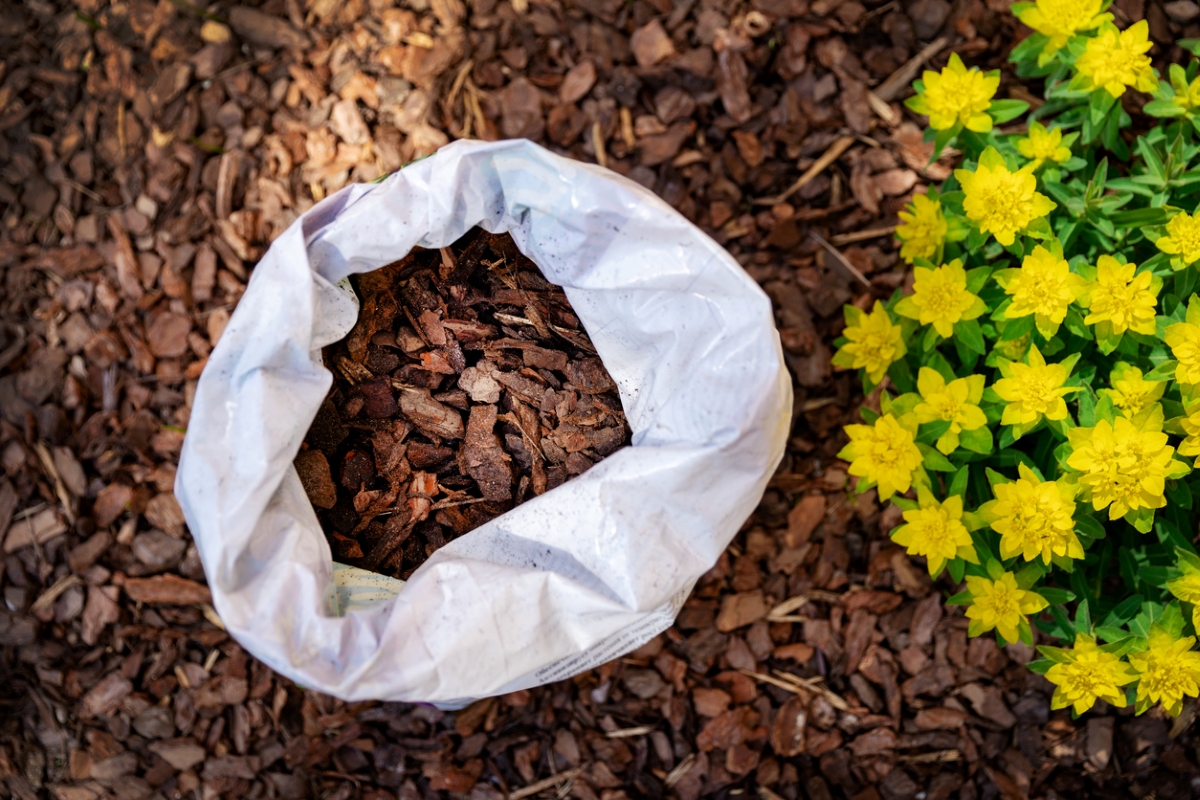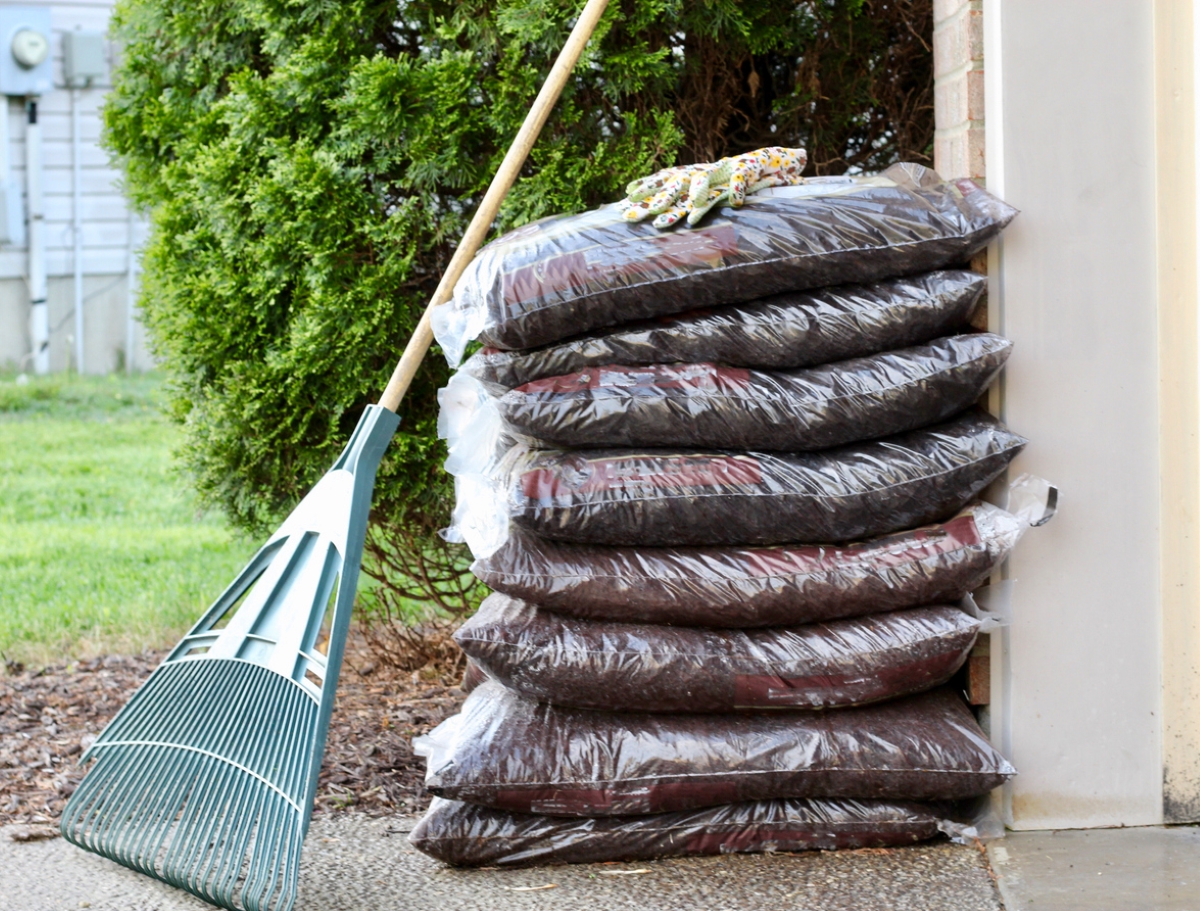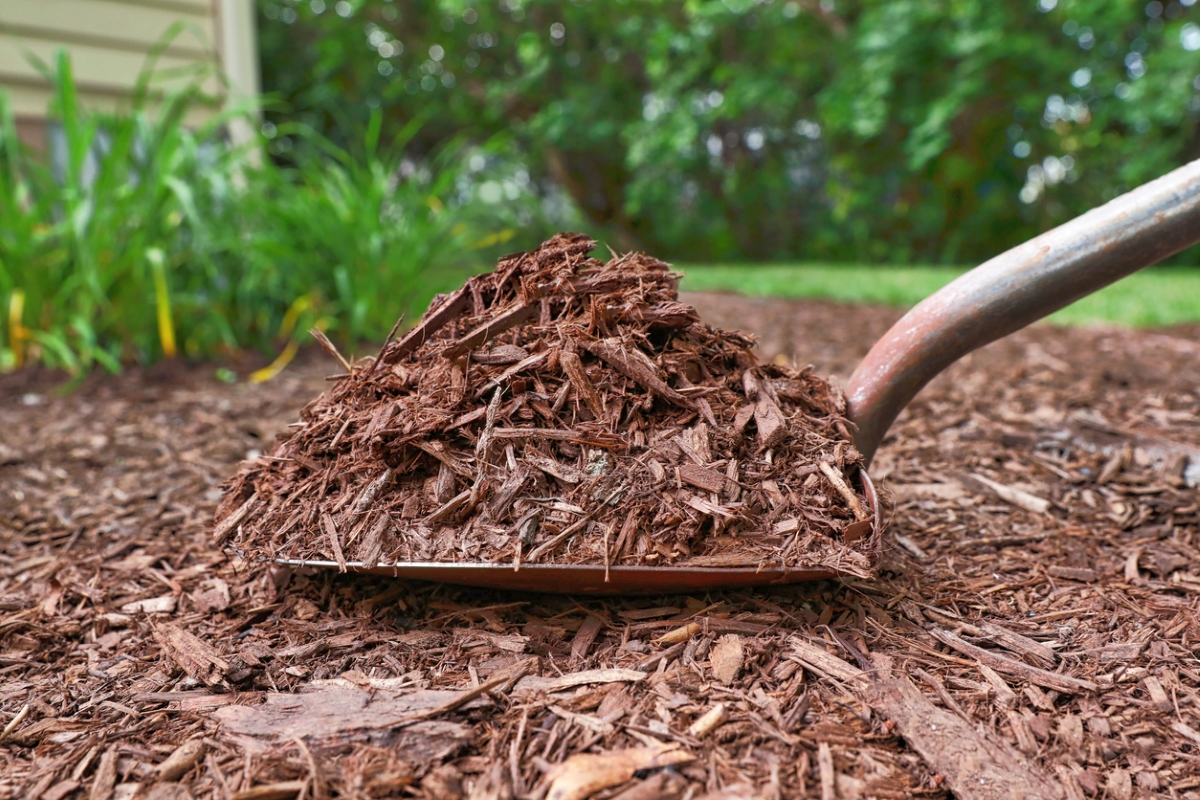

We may earn revenue from the products available on this page and participate in affiliate programs. Learn More ›
Q: I want to use wood mulch in the flower beds in front of my home to suppress weeds, but I’ve heard that it might lure termites to the house. Does mulch attract termites? If so, should I use gravel instead or just avoid using mulch around the house altogether?
A: The termites that cause the most damage in the U.S. are subterranean types that live in underground tunnels and emerge to feed. However, the types of wood used in mulch aren’t these termites’ favorites. In fact, termite activity may actually be higher beneath gravel than it is beneath wood mulch.
It’s the damp soil under mulch that attracts termites—not the mulch itself. Therefore, the best mulching strategy for avoiding termites might be to use no mulch at all, but that could dry out your plants and soil.
RELATED: Solved! What Do Termites Look Like?
Mulch can provide an ideal environment for termites, but it doesn’t attract them to a home.
As any gardener who has done much spadework can attest, shoveling is much more difficult in hard, dry soil than in damp ground. So, tunneling termites who stumble across the soft conditions beneath mulch in their wanderings are likely to set up house there simply to take advantage of the easy digging.
As Donald Lewis of Iowa State University puts it, “There is no evidence that the moist conditions attract termite foragers from the surrounding landscape. Rather, when the termites wander into a suitable habitat they are more likely to remain and feed in that area.”
Rather than look for signs of termites in mulch, it is more important to look for those signs beneath and around mulch. Evidence of termites surrounding mulch can include mud tubes on foundation blocks, accumulations of wings, and any sightings of flying ant-like insects. If you find them, you might want to contact an exterminator (one of the best termite companies such as Terminix can help).
Although gardeners might find termites in store-bought bags of mulch, it’s not the insects’ food of choice.

Referencing a University of Maryland termite study, Lewis notes that termites who received the laboratory control of white birch survived better than those who consumed eucalyptus, hardwood, or pine bark mulch instead. “This result,” he concluded, “suggests that although we routinely discover termites in wood chip mulch, it is unlikely that they feed heavily on organic wood-based mulches.”
In other words, termites have a hard time staying alive on a diet of just mulch. The University of Kentucky Cooperative Extension agrees that termites prefer higher quality wood, such as construction debris buried in backfill. So if you have termites around your home, your garden mulch may not be the issue; it could be buried rubble your house’s builders left behind instead. Termites also can be found in railroad ties or landscape timbers often used as garden borders.
Some types of mulch are more resistant to termites than others.
Mulch comes in many forms, and they’re not all equally likely to harbor termites. Consider these types of mulch and their relationship to these pests.
- Melaleuca: A University of Florida study determined that, although termites can feed on almost any mulch if they have to, they most dislike the melaleuca (paper bark) type. Since less than 15 percent of termites survived on its heartwood in the study, it’s probably the best mulch to use around a house.
- Cypress heartwood: Less than 15 percent of termites survived on cypress heartwood too, theoretically making it a termite-resistant mulch on par with melaleuca. Unfortunately, most cypress mulches aren’t heartwood, and 77 percent of termites survived on cypress sapwood.
- Pine straw: Although pine straw mulch (made of dried pine needles) is often recommended among alternatives to wood mulch, it didn’t fare much better in the study than cypress sapwood did.
- Cedar: Do termites eat cedar mulch? The answer to that question remains up in the air, with the results for western red cedar termed “highly variable” in a University of Hawaii study. However, it did suggest that “termite resistance was moderately correlated with redness.”
RELATED: The 8 Best Mulch Options for Your Landscaping Beds
No matter the type of mulch used, it’s important to create a buffer between mulch and a home’s foundation.

To avoid creating the damp environment that attracts termites to mulch, the ground near your home’s foundation slopes slightly downward and away from the structure. This should ensure that water drains toward the yard rather than the house. Keep any mulch you apply, even black mulch, at least a foot away from the foundation to keep the ground there dry.
Also, avoid applying mulch too heavily. After all, termites in mulch might be using it as a pathway rather than a food source. Florida’s UF/IFAS Extension warns that mulch laid too thickly (more than 4 to 6 inches deep) is more likely to produce the damp, temperate conditions that termites prefer. It also can “provide a ‘bridge’ over the treated perimeter of a house, allowing termites to walk over from landscape to house and avoid contact with soil treated with termiticides.”
